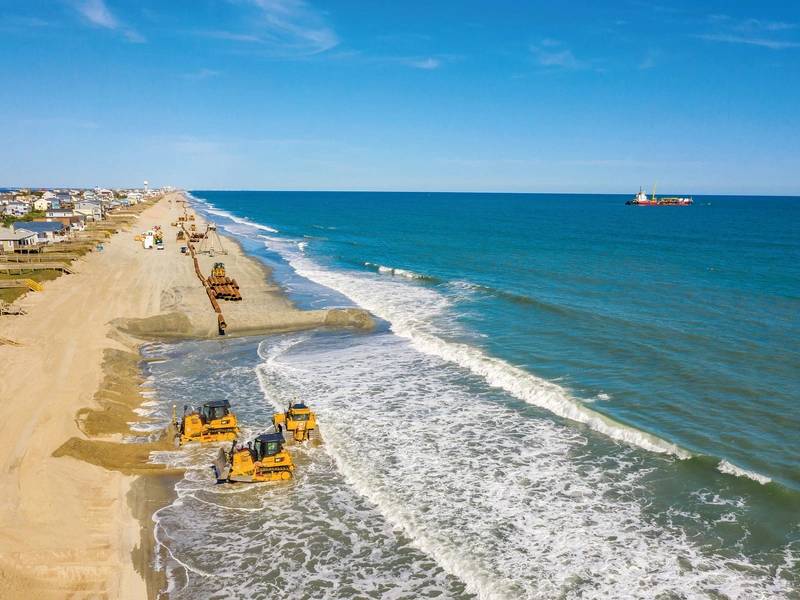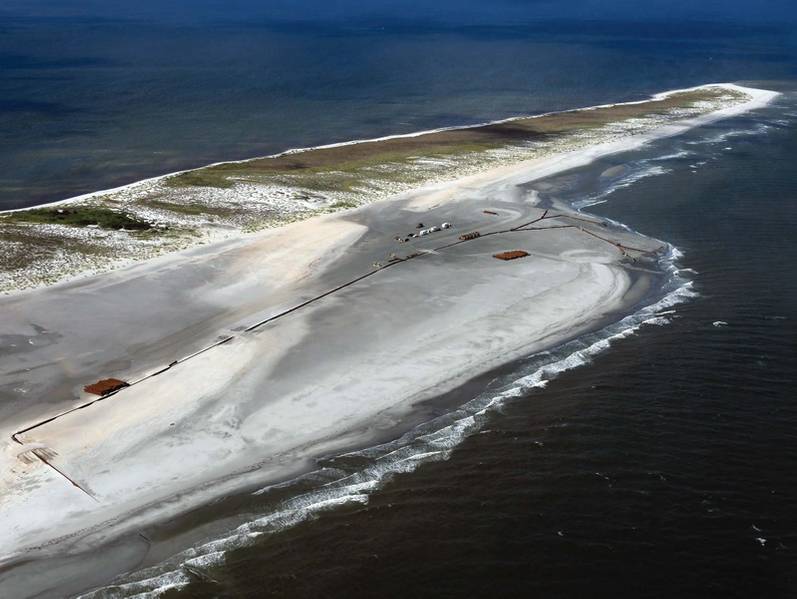Opinion: A Bipartisan Boost for Dredging, the Economy, and the Environment
When leadership at the White House changes parties, you can expect a shift in priorities and policies. In one case, however, continuity is welcome, as President Biden has voiced his support for Buy American and the Jones Act, which are especially beneficial to the maritime and dredging industries.
- Read the March 2021 edition of Maritime Reporter & Engineering News, an edition dominated by dredging.
While the benefits of these pro-American policies extend beyond maritime and dredging, they’re also a recognition of our essential, if underappreciated subtle role in the economy. It provides our companies and workers with an opportunity to not only invest and expand, but also to educate Americans about the role the largely unseen dredging industry plays in our lives.

I doubt anyone shopping at Walmart or Target gives much of a thought to the dredging industry while picking up groceries or birthday gifts for the kids. But, whether they know it or not, virtually everything we find on our store shelves, whether made in America or not, at some point travelled on a ship. We take pride in the role dredging plays in keeping cargoes moving by providing our services to America’s ports.
To keep up with the growth of global commerce, the dredging industry is one of the first calls a port makes to help it expand and to widen and deepen channels to safely accommodate fleets of ever-growing international trading vessels that call on them. The dredging and marine construction industry make it happen to keep cargoes moving and our economy growing.
If Americans aren’t thinking about dredging when they shop, they certainly aren’t doing it when they’re on vacation. Yet we play an essential role in protecting America’s shorelines through beach reclamation.

Our nation benefits from more than 95,000 miles of coastline and, according to NOAA, more than $3 trillion of investment in dwellings, resorts, infrastructure, and other real estate sit on just the Atlantic and Gulf coasts alone. Our industry protects those investments by using innovation and technology to excavate accumulated deposits and transfer appropriate-quality sand to replenish beaches and barrier islands.
And we’re not just looking after your beach vacations. Nearly half of all Americans, 155 million, live in coastal counties, which are under constant attack by storms, erosion, and climate change. Communities turn to the dredging industry to protect the Homefront. Our work constructs barriers to prevent and repair erosion damage and guard our sensitive wetlands. Our wetlands are a critical part of our environment. They serve as giant sponges and reduce the impact of flooding, storm surge, and wave action, they absorb pollutants and improve water quality. They provide habitat for animals and plants and must be protected and kept healthy.
You can even see the hand of our industry in the construction of many of those homes and businesses. For 5,000 years, going back to the ancient Egyptians, concrete has been part of building, and the dredging industry is part of that process. The dredging industry uses its technology and equipment for ocean and instream mining of high-quality sand on ocean and river bottoms to provide concrete manufacturers with a ready supply of sand that helps them deliver one of the literal foundations of the construction economy. You might be reading this while in a home or a building made with the help of sand our industry provided for its concrete.
Our industry is made of companies large and small, but regardless of size they all make very large, long-term investments in costly equipment and technology while simultaneously attempting to judge the market for their services and to flexibly serve the industries that employ them. They’ve invested billions of dollars in American-made equipment and in their American workers to do a job that is as an integral part of the U.S. maritime industrial base and the U.S. economy.
There is a great deal of risk, since most of the work is performed on a unit price basis—placing weather, production, and other performance risks squarely on the shoulders of the contractor. But the continuation of pro-American worker and business policies provides needed stability. We benefit greatly from these companies’ willingness to compete in a tough industry because, when you dig a little deeper, you can see that dredging is essential to the U.S. economy and our everyday lives.
